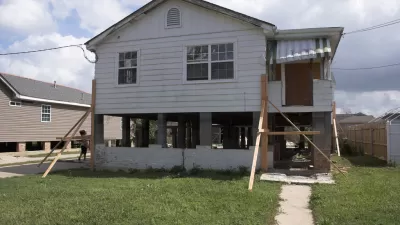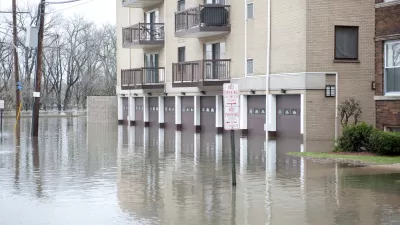Risk-management experts are seeking creative ways to finance resilience investments that prevent damage from natural disasters. Insurance markets, with their direct stake in protecting homes and businesses, can be key partners in this effort.
Broadly speaking, the world of insurance can be divided into two different sectors: private insurance companies and government-run programs. In the United States, the latter have long enticed policyholders to embrace resilience through a simple reward system: make risk-reducing upgrades to your building, and we’ll lower your insurance rates. This mechanism underlies much of the thinking about the power of insurance markets to drive resilience investments. Consider the National Flood Insurance Program (NFIP), America’s federal flood-insurance provider. Established in 1968, and today administered by the Federal Emergency Management Agency (FEMA), the NFIP partners with more than 80 private insurers to provide insurance to property owners if their communities agree to adopt ordinances that reduce the risk of flooding. For the NFIP, measures such as elevating the lowest floor above the base flood elevation qualify homeowners for reduced rates. Strategies like these can be hugely effective. As detailed in a 2015 report by the nonprofit Enterprise Community Partners, one multifamily building in Hoboken, New Jersey, installed floodwater vents and elevated the first floor to ground level. The $25,000 retrofit reduced the cost of flood insurance by 83%, with a return on investment of less than three years. (The owner originally paid $12,000 for $300,000 worth of coverage; after the retrofit, the premium dropped to $2,000 for $820,000 worth of coverage.)
FULL STORY: Can insurance markets jump start resilience?

Trump Administration Could Effectively End Housing Voucher Program
Federal officials are eyeing major cuts to the Section 8 program that helps millions of low-income households pay rent.

Planetizen Federal Action Tracker
A weekly monitor of how Trump’s orders and actions are impacting planners and planning in America.

Ken Jennings Launches Transit Web Series
The Jeopardy champ wants you to ride public transit.

‘Smart Surfaces’ Policy Guide Offers Advice for Building and Maintaining Urban Tree Canopies
Healthy, robust tree canopies can reduce the impacts of extreme heat and improve air quality.

New Jersey Lawsuit Targets Rent-Setting Algorithms
The state of New Jersey is taking legal action against landlords and companies that engage in what the state’s Attorney General alleges is illegal rent fixing.

Washington Legislature Passes Rent Increase Cap
A bill that caps rent increases at 7 percent plus inflation is headed to the governor’s desk.
Urban Design for Planners 1: Software Tools
This six-course series explores essential urban design concepts using open source software and equips planners with the tools they need to participate fully in the urban design process.
Planning for Universal Design
Learn the tools for implementing Universal Design in planning regulations.
Heyer Gruel & Associates PA
Ada County Highway District
Institute for Housing and Urban Development Studies (IHS)
City of Grandview
Harvard GSD Executive Education
Toledo-Lucas County Plan Commissions
Salt Lake City
NYU Wagner Graduate School of Public Service





























